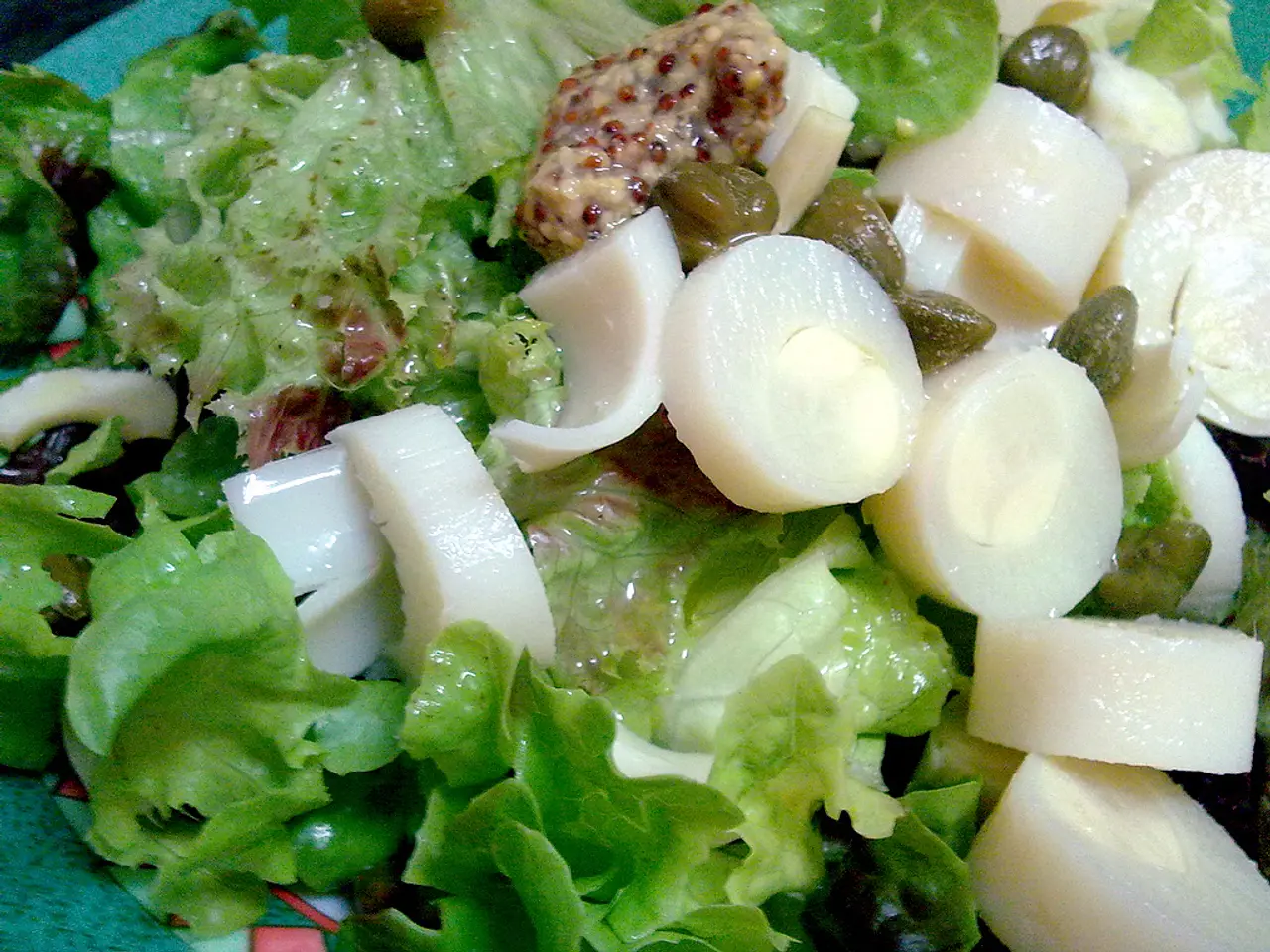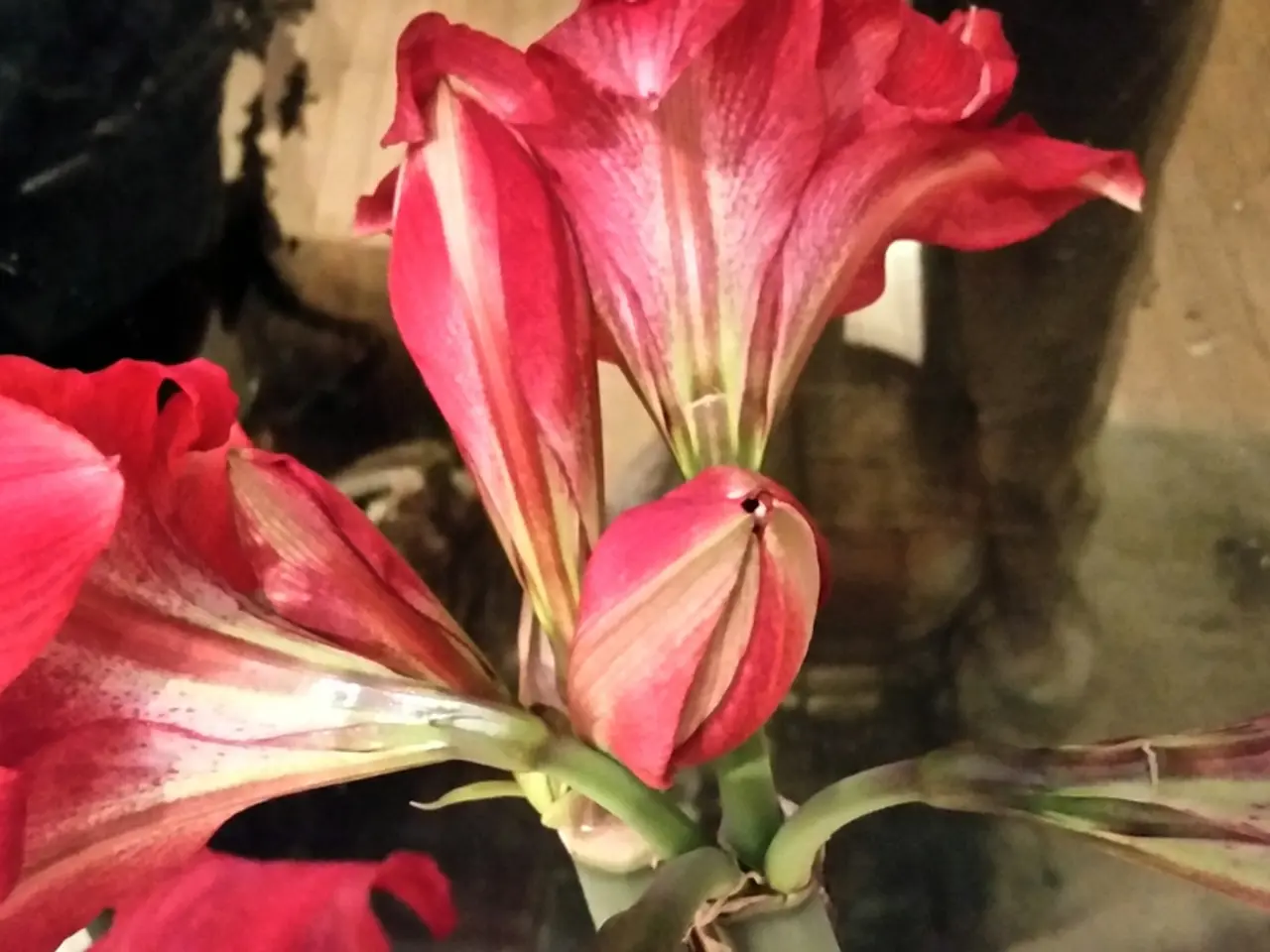Strategies for Planting Salad Seeds in Specified Containers or Trays
Growing and Transplanting Hearting Lettuces and Salad Leaves: A Guide
Ready to grow lush lettuces and salad leaves at home? Let's get started with our expert-approved steps for propagating and transplanting hearting lettuces using seed modules.
Here's what you'll need:
- Lettuce seeds
- Seed trays or modules
- Multi-purpose, peat-free compost
- Vermiculite or sieved compost
- Clear plastic bag or lid
- 7.5cm plastic pots
- Pencil or dibber
Step 1:
Fill your modules up to the brim with seed compost, then scatter one or two seeds in each. You can always prune excess seedlings later. Cover the seeds with either vermiculite or sieved compost, and then immerse the tray in an inch of water until the compost feels damp. Next, remove the tray from the water and cover with a clear plastic lid or bag. Place it in a warm location to germinate.
Step 2:
Once the second pair of leaves (or 'true' leaves) appear, it's time to pot on your seedlings. Gently uproot each seedling using a dibber or pencil, taking care to handle them by the leaves instead of the stems. Transfer each seedling into a 7.5cm pot filled with multi-purpose compost.
Step 3:
Protect your young plants from spring frosts by situating them in a greenhouse or porch until the soil has warmed up. Continue to nurture your plants for a few weeks until they have developed a strong root system and are ready for transplanting.
Planting Baby Leaf Mixes
For sowing baby leaf mixes and herbs like parsley, use seed trays instead of modules and sow the seeds more densely. You can later plant out the clumps as a group rather than as individual plants.
Recommended Lettuce Varieties:
- For a lettuce that's bolt-resistant, disease-resistant, and maintains crisp heads even in warm conditions, choose the Rosha Romaine lettuce.
- Oliveria is another hardy, heat-tolerant variety that's great for summer growth.
Happy Planting and Transplanting!
To ensure successful propagation and transplantation, follow these expert recommendations:
- Sowing Seeds in Modules:
- Use seed modules with high-quality, well-draining compost for consistent growth.
- Sow seeds sparingly to avoid overcrowding and promote even growth.
- Maintain even soil moisture but avoid waterlogging during germination.
- Growing Seedlings:
- Keep seedlings in a cool, well-lit location with consistent temperatures.
- Thin out crowded seedlings if necessary to provide each plant with adequate space.
- Fertilize seedlings with a seaweed extract feed to build strong roots and reduce transplant shock.
- Transplanting to the Garden:
- Gradually expose seedlings to outdoor conditions before transplanting to prevent transplant shock.
- Choose a well-drained, fertile garden bed that has been enriched with compost.
- Carefully transplant seedlings in the early morning or evening to minimize stress.
- Space hearting lettuces adequately according to the variety's growth requirements, typically around 20-25 cm (8-10 inches) apart.
- Aftercare:
- Maintain consistent moisture levels during establishment.
- Mulch around your plants to retain moisture and suppress weeds.
- Continue feeding your crops with a balanced organic fertilizer or seaweed extract to stimulate healthy growth.
By meticulously following these guidelines, you'll master the art of growing hearting lettuces and salad leaves and then transplanting them to your garden for a bountiful harvest.
Delve into home-and-garden activities beyond hearting lettuces and salad leaves by experimenting with baby leaf mixes and herbs like parsley. For a successful transition from seed modules to your garden, follow expert recommendations for sowing, growing, and transplanting to minimize transplant shock and ensure a bountiful harvest.




